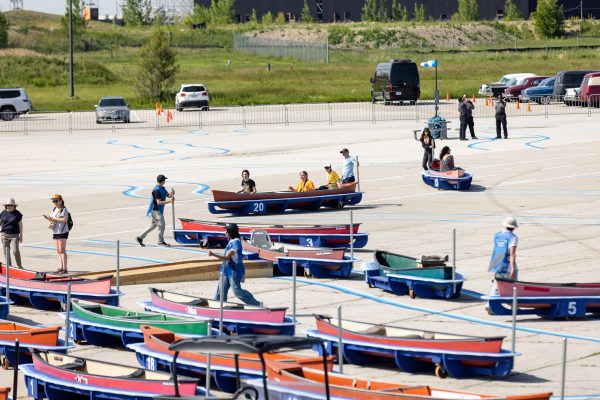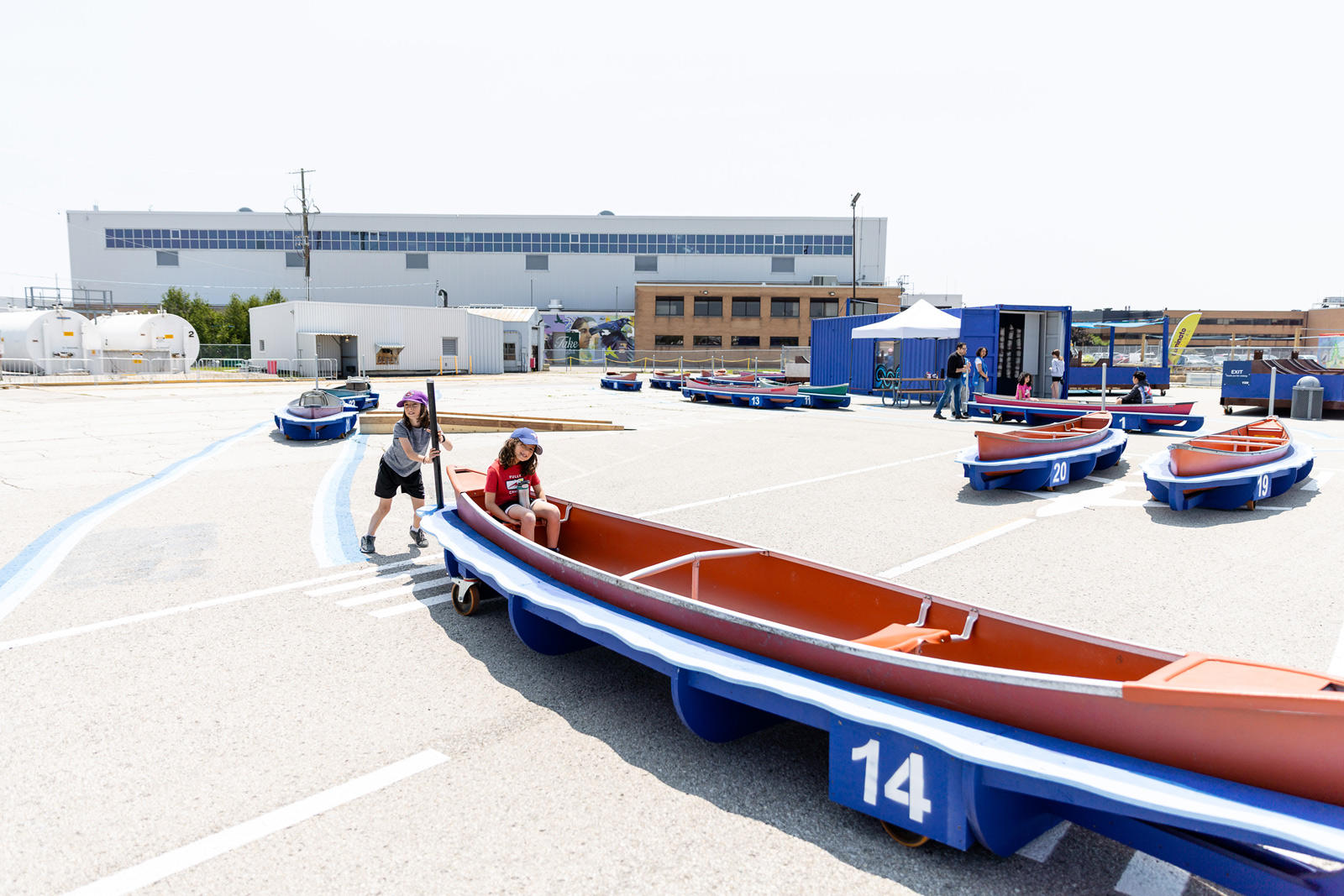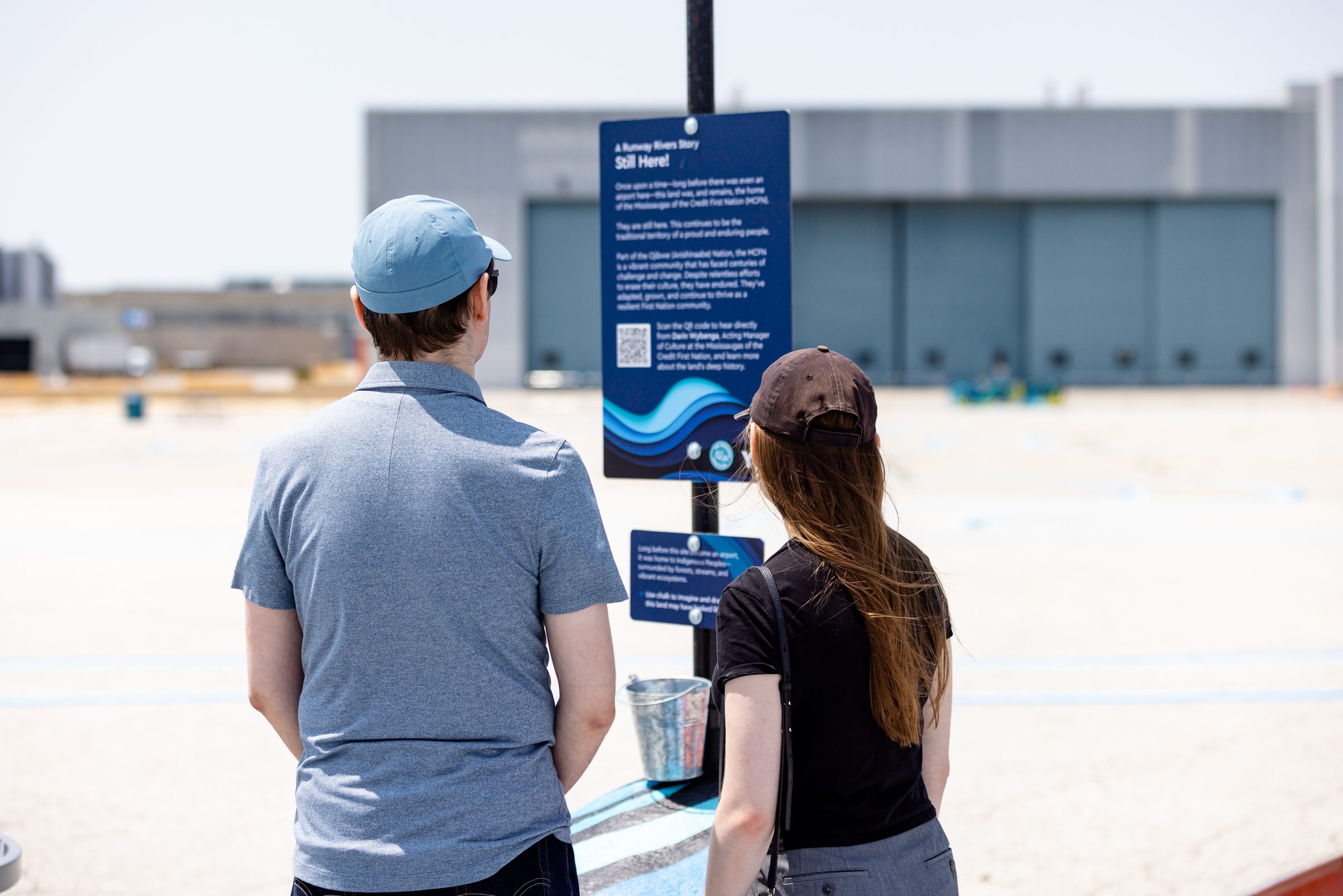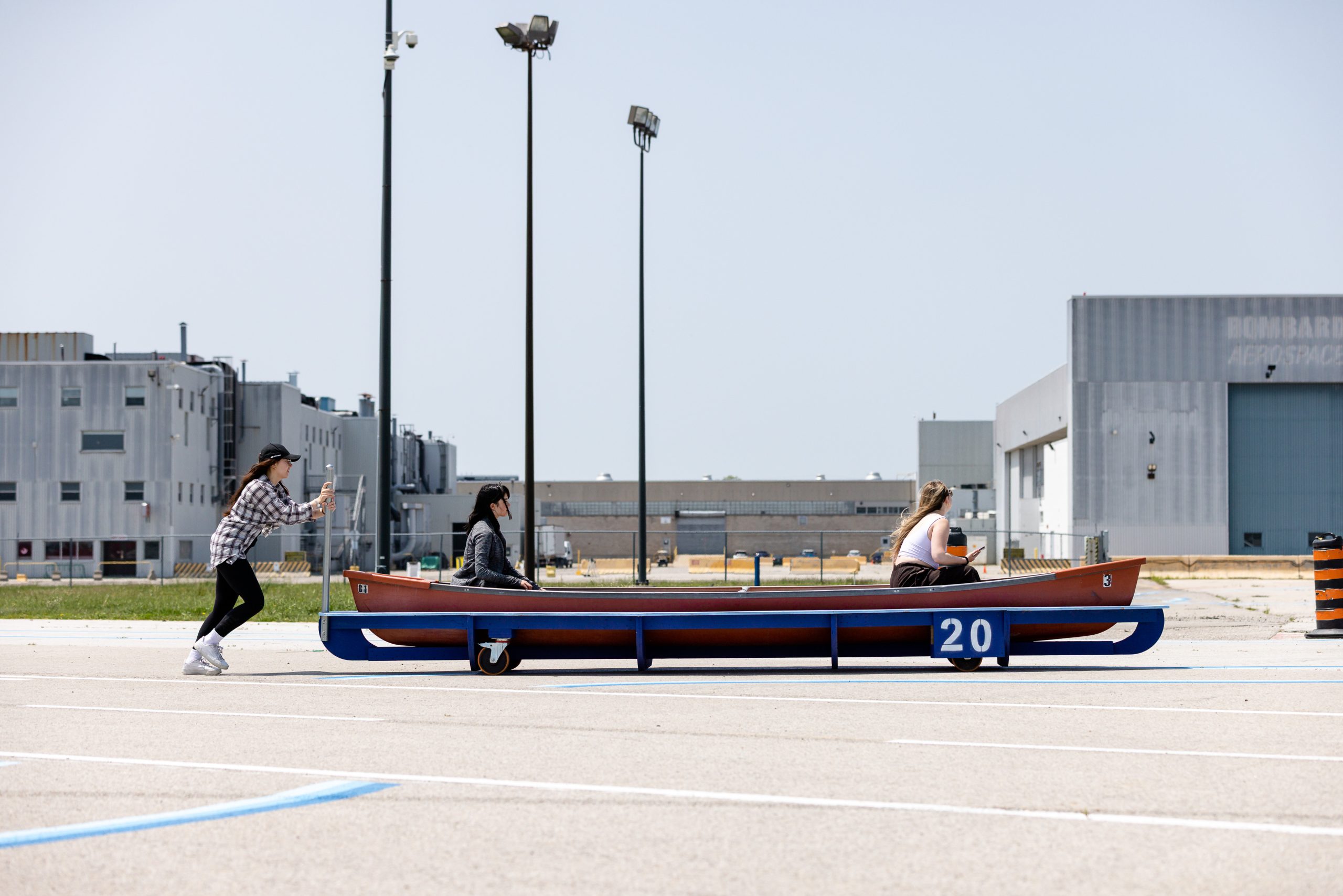At four years old, doodling with a crayon was how John Notten discovered his love for art. Today, at 62, the Toronto-based artist has never lost that element of joy in his work. It’s a quality showcased in his creation, Runway Rivers, a free (but ticketed) interactive sculpture installation at Downsview on the former airport runway, which began on June 14th and runs every Saturday through to October 11.
“I think that true creativity and play are the same thing, because both of them are about discovering your world, figuring out who you are and what your place is in that world,” Notten says. “As an artist, I’m not just doing a project that I hope is kind of interesting or fun; the goal is to ask, can this affect change? Can it make people a little bit more aware of something they didn’t know before — respond responsibly to the landscape around them just a little bit more.”
Seated within the embrace of a wheeled canoe, Runway Rivers guides visitors along the tarmac through a series of painted ancient rivers representing those that once coursed through the former Downsview airport lands. Signage is placed as checkpoints along the course highlighting the real story behind the land. Notten took great care to speak to geographers and urban planners, as well as including QR codes leading to audio where the history can be heard from Indigenous peoples.
At the centre of the project was a fascination and adoration of the canoe, which began in Notten’s childhood family trips, something he passed onto his own children.
“One of my proudest achievements as a father is passing that love onto my children. So when I began thinking of this project, there came a point where I started to think of the canoe beyond recreation or for getting around in nature, but more conceptually,” Notten says. “What it means to me personally, but also in the broader sense, the history of this place we now call Canada.”
The project first sprouted when Notten responded to an international call for proposals from the project that is developing the former airport into a new community, branded as YZD after the code name of the former airport. Called “Beyond the Tarmac,” the call challenged artists to reimagine the tarmac into a creative art project.
Runway Rivers was the winner among 87 proposals submitted.
“I figured that a lot of proposals would come in that would be about airports and the history of aviation on the site, which is very important, but I was interested in a time before that ever existed,” he says.
Alana Mercury, director of programming and placemaking at Northcrest Developments, YZD’s developer, was a member of the selection committee. Among a list of proposals that ranged from a hot-air balloon to large-scale murals, Runway Rivers highlighted one of their major goals as developers of the new community.
“What we’re doing here at YZD is very different than normal developers. We are leading with place-making, artist engagements, and experiences to help lean into both the history and the future of the site. And John’s piece really did hone in on that,” Mercury says.
The focus on rivers having once surrounded but never engulfed the site has parallels to the overall plans for development that Northcrest has in mind. Similar to how the area once acted as a hub for the flowing rivers all around it, the goal is to give community a space to form before any drilling and building takes place.
In addition to Runway Rivers, farmers’ markets, an outdoor skating rink with a live DJ, and outdoor movie nights are some of the other ways this goal is being furthered.
“We’re doing a lot of things to kind of test what this community can be, by not only engaging with urban planners and developers, but thinking of the people that are actually going to use this site and will learn to love this place,” she says. “We want to listen to ideas that come to light from different people, different generations, and walks of life.”
In terms of Notten’s hopes for what visitors might take away from his art, it’s simple.
“I would never be so bold as to suggest that this is going to make sweeping changes, but I can say when I learned about the history of the canoe in Canada, I approached it in a very different way,” he says. “So I hope the public may have their own heightened awareness of their relationship with their environment, because it’s so precious and can so easily be damaged or destroyed.”
All photos courtesy of Northcrest Developments




